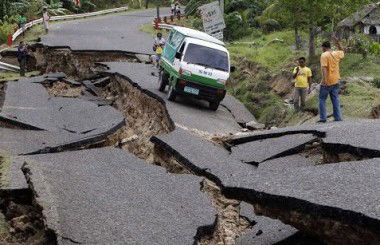Articles features
Strong quake overdue in India, but not any time soon

Kolkata, April 30
Amid reports that a massive
earthquake is overdue in some parts of the Himalayas, a section of
Indian scientists say no unusual seismic activity or abnormal increase
in changes in the earth's surface have been detected in India's
northeast.
In addition, they pointed out that no two strong earthquakes have come in the Himalayas immediately after one another.
Saturday's
strong earthquake measuring 7.9 on the Richter Scale has killed
thousands and caused widespread destruction in Nepal. The tremors also
caused deaths and damages in India besides Tibet.
The
2,500-km-long Himalayan arc extending from Kashmir in the northwest to
Arunachal Pradesh in the northeast is seismically "very active", experts
from the Gandhinagar-based Institute of Seismological Research (ISR)
said.
The movement of tectonic plates generates stress over time
and rocks at the surface break in response. When the strain accumulates,
every 150-200 km stretch of the 2,500-km-long Himalayas can be hit by a
high magnitude earthquake in 150-200 years.
Based on historical
data, they say a strong quake was overdue in Uttarakhand or Assam but
other indicators have not shown any abnormal spikes.
"Statistics
and historical earthquake list say that an earthquake of magnitude 8 or
above is overdue in Uttarakhand or Assam. It is, however, not possible
to say that it may happen today or 50 years from now as we neither know
where the accumulation of stress has reached the elastic limit nor
when," A.P. Singh, scientist, ISR, told IANS.
He said: "It is to
be mentioned that there is no unusual increase in seismicity and the GPS
(Global Positioning System) network spread all over northeast India has
not shown any abnormal increase in crustal deformation in recent years.
Hence no sign of large earthquake coming is observed."
According
to the US Geological Survey, crustal deformation refers to the changing
earth's surface caused by tectonic forces that are accumulated in the
crust and then cause earthquakes.
So understanding the details of
deformation and its effects on faults is important to figure out which
faults are most likely to produce the next earthquake. But Singh said
current technology can't help predict when the quakes will strike.
"It
has been observed in the past that aftershocks are lower in intensity
compared to the original shock. Secondly, in Himalaya no two strong
earthquakes had come immediately after one another. So, the report that a
bigger earthquake may come soon is not scientifically founded,"
clarified Pallabee Choudhury, another scientist at ISR.
There are three thrust belts in the Himalayas and all are seismic in nature.
The
Nepal quake emerged from the main boundary thrust, said senior
scientist Sankar Kumar Nath at the IIT Kharagpur, adding all Himalayan
earthquakes are severe.
"If you look at the Himalayas, we have
had large earthquakes and greatest of the great earthquakes are still
possible. Whenever there is an earthquake, it generates a slip of about
several meters. This is due to a large magnitude (around 8). The
Himalayas has the potential to generate a 9 magnitude earthquake," Nath
said.
(Sahana Ghosh can be contacted at sahana.g@ians.in)



































